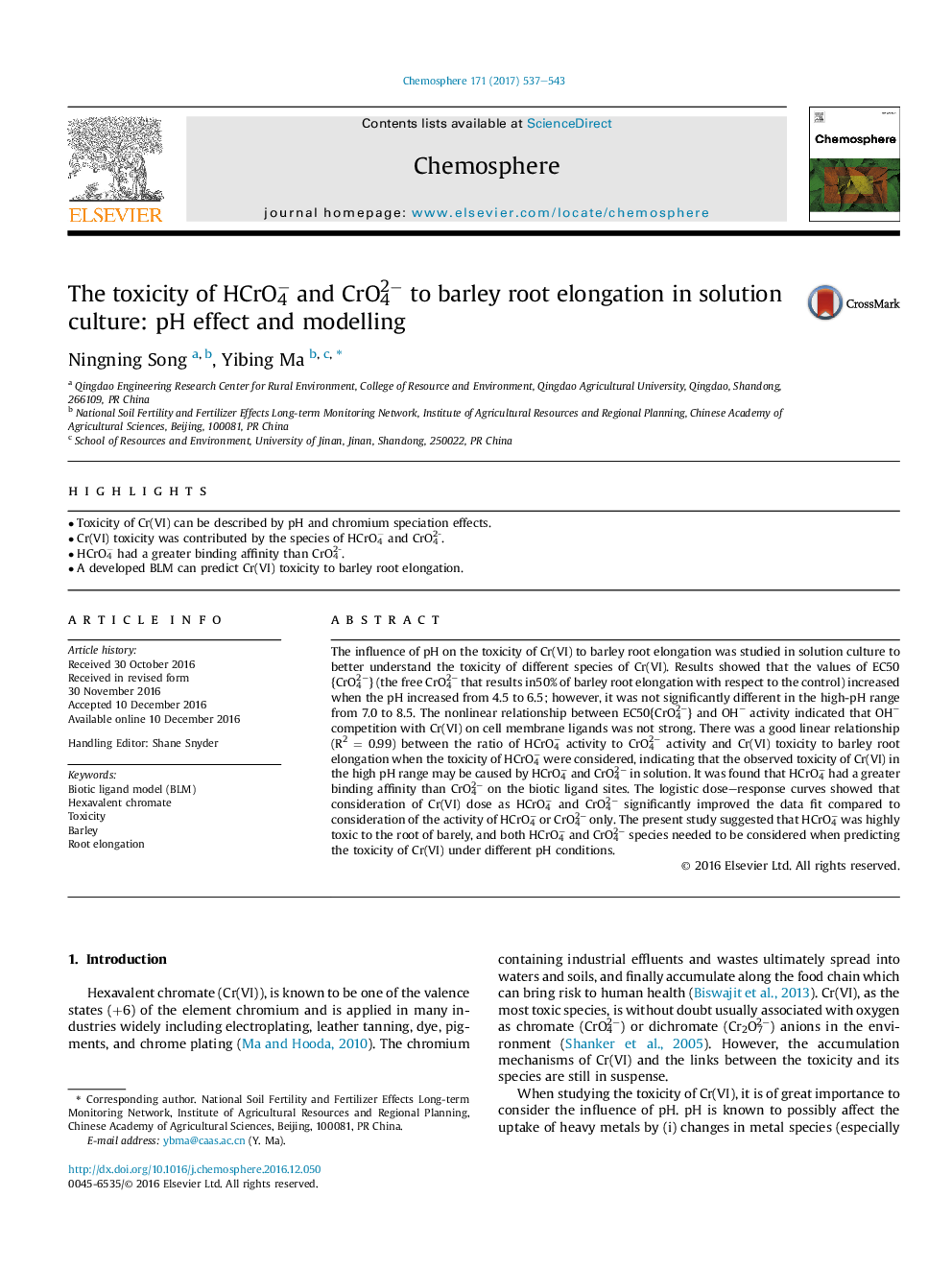| کد مقاله | کد نشریه | سال انتشار | مقاله انگلیسی | نسخه تمام متن |
|---|---|---|---|---|
| 5746370 | 1618800 | 2017 | 7 صفحه PDF | دانلود رایگان |

- Toxicity of Cr(VI) can be described by pH and chromium speciation effects.
- Cr(VI) toxicity was contributed by the species of HCrO4â and CrO42-.
- HCrO4â had a greater binding affinity than CrO42-.
- A developed BLM can predict Cr(VI) toxicity to barley root elongation.
The influence of pH on the toxicity of Cr(VI) to barley root elongation was studied in solution culture to better understand the toxicity of different species of Cr(VI). Results showed that the values of EC50{CrO42â} (the free CrO42â that results in50% of barley root elongation with respect to the control) increased when the pH increased from 4.5 to 6.5; however, it was not significantly different in the high-pH range from 7.0 to 8.5. The nonlinear relationship between EC50{CrO42â} and OHâ activity indicated that OHâ competition with Cr(VI) on cell membrane ligands was not strong. There was a good linear relationship (R2Â =Â 0.99) between the ratio of HCrO4â activity to CrO42â activity and Cr(VI) toxicity to barley root elongation when the toxicity of HCrO4â were considered, indicating that the observed toxicity of Cr(VI) in the high pH range may be caused by HCrO4â and CrO42â in solution. It was found that HCrO4â had a greater binding affinity than CrO42â on the biotic ligand sites. The logistic dose-response curves showed that consideration of Cr(VI) dose as HCrO4â and CrO42â significantly improved the data fit compared to consideration of the activity of HCrO4â or CrO42â only. The present study suggested that HCrO4â was highly toxic to the root of barely, and both HCrO4â and CrO42â species needed to be considered when predicting the toxicity of Cr(VI) under different pH conditions.
Journal: Chemosphere - Volume 171, March 2017, Pages 537-543